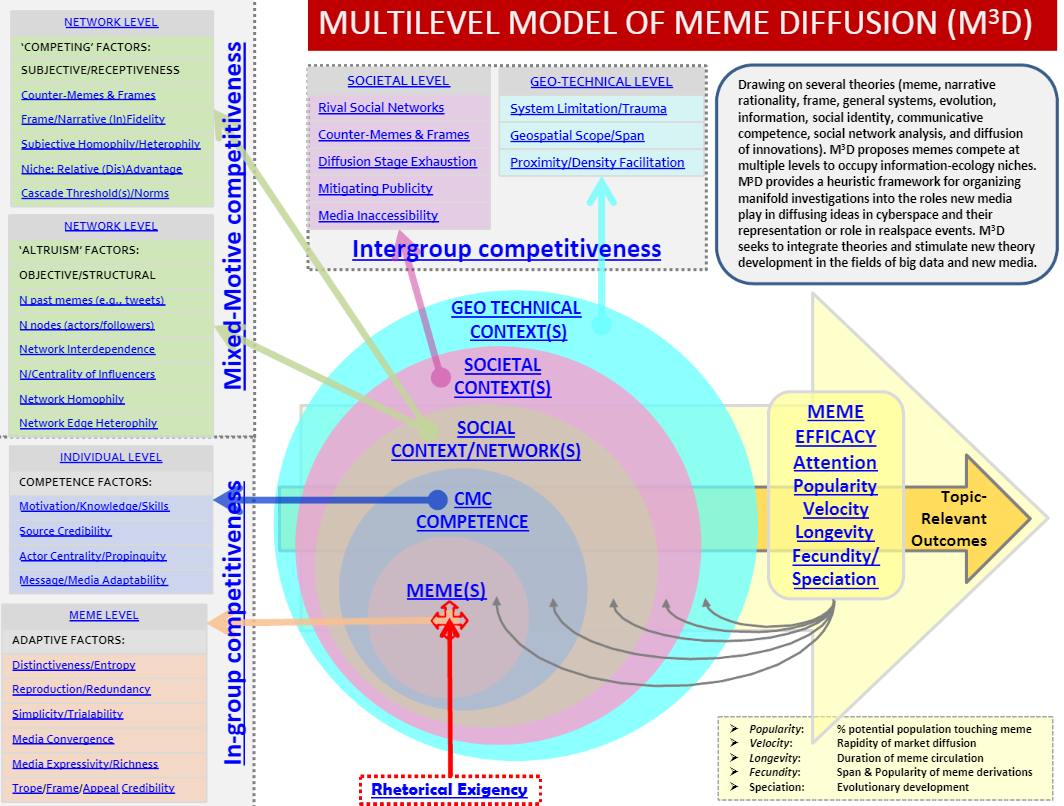M3D Model
We introduced the multilevel model of meme diffusion (M3D) theory with 30 separate variables that either (a) facilitate or impede a meme’s competitiveness, or (b) facilitate or impede a context’s competitiveness to resist or accept that meme (Figure 3). The most central axiom of the model follows from the evolutionary premises of Dawkins (1976) who conceptualized the meme as an analogue of the gene, and Willson & Wilson’s (2007) summary of group-level selection theory. The axiom is that selfish f eatures of memes (i.e., features that facilitate the meme’s adaptive fitness or survival value) compete against the group-level factors that compete against new speciation of memes (e.g., the competition for information space in a given communicative ecological niche). This is a theory that predicts how memes work, diffuse, and successfully endure and evolve into new memes will facilitate the focus of investigations into different communication environments and political and social movement contexts. There are therefore dozens of hypotheses that can guide data collection, and guide retrospective interpretation of exploratory data.
Publication:
(To view pdf files you may need to download Adobe Reader.)
Spitzberg, B. H. (2014). Toward A Model of Meme Diffusion (M3D). Communication Theory (10503293), 24(3), 311-339. doi:10.1111/comt.12042 http://onlinelibrary.wiley.com/doi/10.1111/comt.12042/pdf.




